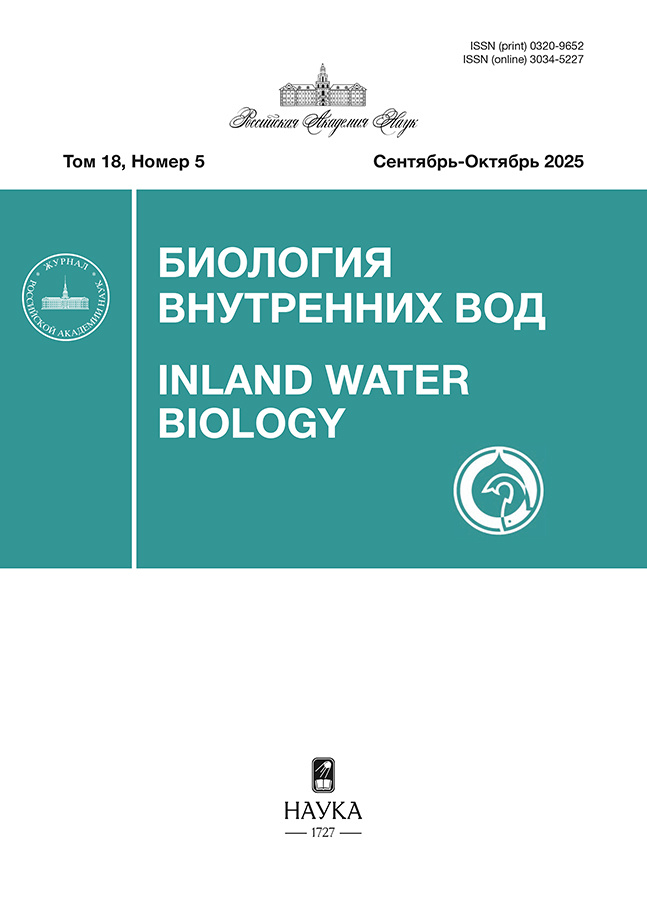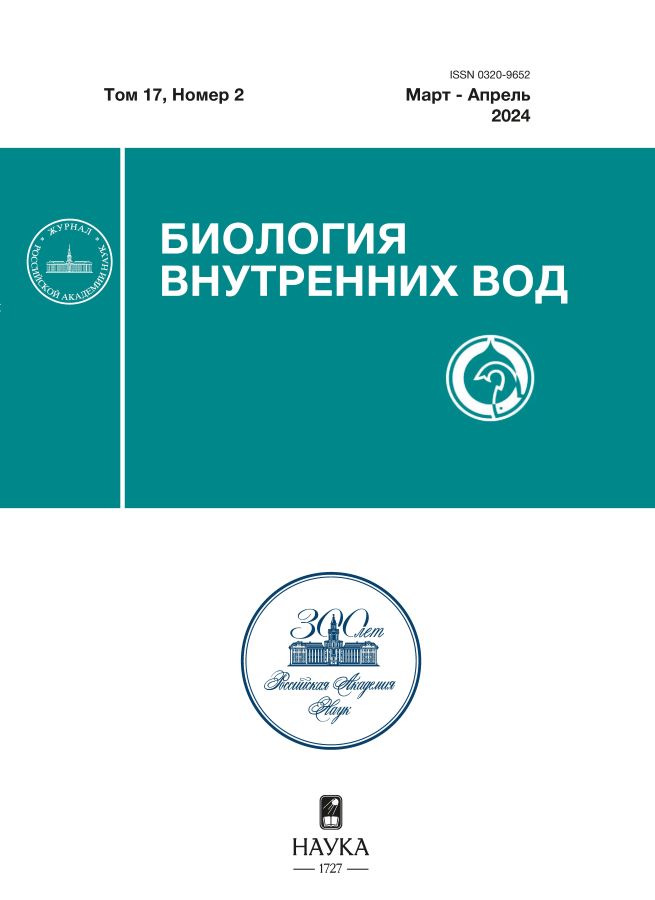Влияние микропластика на пищевую и двигательную активность динофлагелляты Oxyrrhis marina в эксперименте
- Авторы: Рауэн Т.В.1, Муханов В.С.1, Баяндина Ю.С.1, Лях А.М.1
-
Учреждения:
- Институт биологии южных морей им. А.О. Ковалевского Российской академии наук
- Выпуск: Том 17, № 2 (2024)
- Страницы: 296-307
- Раздел: ВОДНАЯ ТОКСИКОЛОГИЯ
- URL: https://cardiosomatics.ru/0320-9652/article/view/670133
- DOI: https://doi.org/10.31857/S0320965224020088
- EDN: https://elibrary.ru/xtgdhh
- ID: 670133
Цитировать
Полный текст
Аннотация
Методами проточной цитометрии проанализирована динамика потребления хищной гетеротрофной динофлагелляты Oxyrrhis marina микроводорослей Isochrysis galbana (ISO) – ее естественной добычи — и пластиковых микросфер такого же размера. С помощью компьютерного метода анализа видеозаписей движения Oxyrrhis marina оценивали влияние диеты, включающей эти компоненты, на скорость и траектории движения клеток O. marina. Показано, что с первых минут эксперимента динофлагелляты активно потребляли оба пищевых объекта, однако к концу эксперимента численность микросфер в среде снижалась в меньшей степени, с 4.4 · 105 до 2.2 · 105 кл./мл, в то время как клетки Isochrysis galbana почти полностью выедались, а их численность уменьшалась более, чем на два порядка, с 4.9 · 105 кл./мл до 2.3 · 103 кл./мл. Такая динамика была связана с компенсацией численности микросфер в среде за счет их экскреции и повторного фагоцитоза клетками Oxyrrhis marina. Увеличение размеров клеток динофлагеллят, которое было следствием потребления пластиковых микросфер, не вело к заметному снижению их подвижности и нарушению локомоции. “Холостое”, т.е. не обеспечивающее питательными веществами, питание динофлагеллят микропластиком было причиной статистически значимого снижения их численности (в сравнении с контролем и опытом с микроводорослями). Это могло быть обусловлено неоправданно высокими энергозатратами их популяции на постоянный поиск, фагоцитоз и экскрецию микросфер. Признаков отказа хищника от подобного “холостого” питания не было выявлено, наоборот, — подвижность клеток со временем возрастала, что только ухудшало ситуацию. Подобные процессы могут иметь далеко идущие негативные последствия для всей пищевой цепи. В частности, “упакованный” одноклеточными организмами микропластик может переноситься на более высокие трофические уровни и аккумулироваться в моллюсках, рыбах и более крупных хищниках.
Ключевые слова
Полный текст
Об авторах
Т. В. Рауэн
Институт биологии южных морей им. А.О. Ковалевского Российской академии наук
Автор, ответственный за переписку.
Email: taschi@mail.ru
Россия, Севастополь
В. С. Муханов
Институт биологии южных морей им. А.О. Ковалевского Российской академии наук
Email: taschi@mail.ru
Россия, Севастополь
Ю. С. Баяндина
Институт биологии южных морей им. А.О. Ковалевского Российской академии наук
Email: taschi@mail.ru
Россия, Севастополь
А. М. Лях
Институт биологии южных морей им. А.О. Ковалевского Российской академии наук
Email: taschi@mail.ru
Россия, Севастополь
Список литературы
- Стельмах Л.В., Мансурова И.М. 2021. Физиологический механизм выживания динофитовых водорослей в условиях биогенного лимитирования // Биология внутр. вод. № 2. С. 198. https://doi.org/10.31857/S0320965221020157
- Ханайченко А.Н., Битюкова Ю.Е. 1999. Избирательность питания личинок калкана и выбор стратегии их кормления // Экология моря. № 48. C. 63.
- Ateia M., Zheng T., Calace S. et al. 2020. Sorption behavior of real microplastics (MPs): Insights for organic micropollutants adsorption on a large set of well-characterized MPs // Sci. Total Environ. V. 720. P. 137634. https://doi.org/10.1016/j.scitotenv.2020.137634
- Athey S.N., Albotra S.D., Gordon C.A. et al. 2020. Trophic transfer of microplastics in an estuarine food chain and the effects of a sorbed legacy pollutant // Limnol., Oceanogr. V. 5. P. 154. https://doi.org/10.1002/lol2.10130
- Baiandina I.S., Khanaychenko A.N. 2019. Optimization of the method for determining the motility characteristics of fish spermatozoa using ImageJ Software and Excel Macros // J. Ichthyol. V. 59. № 1. P. 127. https://doi.org/.org/10.1134/S0032945219010016
- Barboza L.G.A., Vieira L.R., Guilhermino L. 2018. Single and combined effects of microplastics and mercury on juveniles of the European seabass (Dicentrarchus labrax): changes in behavioural responses and reduction of swimming velocity and resistance time // Environ. Pollut. V. 236. P. 1014. https://doi.org/10.1016/j.envpol.2017.12.082
- Barnes D.K.A., Galgani F., Thompson R.C., Barlaz M. 2009. Accumulation and fragmentation of plastic debris in global environments // Philosophical Transactions of the Royal Society. A. V. 364. P. 1985. https://doi.org/10.1098/rstb.2008.0205
- Beaumont N.J., Aanesen M., Austen M.C. 2019. Global ecological, social and economic impacts of marine plastic // Mar. Pollut. Bull. V. 142. P. 189. https://doi.org/10.1016/j.marpolbul.2019.03.022
- Bermúdez J.R., Metian M., Oberhänsli F., Taylor A. 2021. Preferential grazing and repackaging of small polyethylene microplastic particles (≤5 μm) by the ciliate Sterkiella sр. // Mar. Environ. Res. V. 166. P. 105260. https://doi.org/10.1016/j.marenvres.2021.105260
- Botterell Z.L., Beaumont N., Dorrington T. et al. 2019. Bioavailability and effects of microplastics on marine zooplankton: a review // Environ. Pollut. V. 245. P. 98. https://doi.org/10.1016/j.envpol.2018.10.065
- Calbet A. 2008. The trophic roles of microzooplankton in marine systems // ICES J. Mar. Sci. V. 65. P. 325. https://doi.org/.org/10.1093/icesjms/fsn013
- Carbery M., O’Connor W., Palanisami T. 2018. Trophic transfer of microplastics and mixed contaminants in the marine food web and implications for human health // Environ. International. V. 115. P. 400. https://doi.org/10.1016/j.envint.2018.03.007
- Chubarenko I., Efimova I., Bagaeva M. et al. 2020. On mechanical fragmentation of single-use plastics in the sea swash zone with different types of bottom sediments: Insights from laboratory experiments // Mar. Pollut. Bull. V. 150. P. 110726. https://doi.org/10.1016/j.marpolbul.2019.110726
- Cole M., Lindeque P., Fileman E. et al. 2013. Microplastic Ingestion by Zooplankton // Environ. Sci. Technol. V. 47. № 12. P. 6646. https://doi.org/10.1021/es400663f
- Cooper D.A., Corcoran P.L. 2010. Effects of mechanical and chemical processes on the degradation of plastic beach debris on the island of Kauai, Hawaii // Mar. Pollut. Bull. V. 60. № 5. P. 650. https://doi.org/10.1016/j.marpolbul.2009.12.026
- Coutteau P. 1996. Micro-Algae. Manual on the production and use of live food for aquaculture. Rome.
- Desforges J.P.W., Galbraith M., Ross P.S. 2015. Ingestion of microplastics by zooplankton in the Northeast Pacific Ocean // Arch. Environ. Contam. Toxicol. V. 69. № 3. P. 320. https://doi.org/.org/10.1007/s00244-015-0172-5
- Deuer S.M., Grünbaum D. 2006. Individual foraging behaviors and population distributions of a planktonic predator aggregating to phytoplankton thin layers // Limnol., Oceanogr. V. 51. P. 109. https://doi.org/.org/10.4319/lo.2006.51.1.0109
- Egbeocha C.O., Malek S., Emenike C.U., Milow P. 2018. Feasting on microplastics ingestion by and effects on marine organisms // Aquat. Biol. V. 27. P. 93. https://doi.org/10.3354/ab00701
- Fulfer V.M., Menden-Deuer S. 2021. Heterotrophic dinoflagellate growth and grazing rates reduced by microplastic ingestion // Frontiers in Marine Science. P. 1044. https://doi.org/10.3389/fmars.2021.716349
- Galloway T.S., Cole M., Lewis C. 2017. Interactions of microplastic debris throughout the marine ecosystem // Nature Ecol. Evol. V. 1. № 5. P. 1. https://doi.org/.org/10.1038/s41559-017-0116
- Hansen P.J. 1991. Quantitative importance and trophic role of heterotrophic dinoflagellates in a coastal pelagial food web // Mar. Ecol.: Prog. Ser. V. 73. № 2–3. P. 253.
- Kim S.W., An Y.J. 2020. Edible size of polyethylene microplastics and their effects on springtail behavior // Environ. Pollut. V. 266. P. 115255. https://doi.org/10.1016/j.envpol.2020.115255
- Kukulka T., Proskurowski G., Morét Ferguson S. et al. 2012. The effect of wind mixing on the vertical distribution of buoyant plastic debris // Geoph. Res. Letters. V. 39(7). https://doi.org/10.1029/2012gl051116
- Law K.L., Narayan R. 2022. Reducing environmental plastic pollution by designing polymer materials for managed end-of-life // Nat. ReV. Mater. V. 7. № 2. P. 104. https://doi.org/
- Lomonaco T., Manco E., Corti A. 2020. Release of harmful volatile organic compounds (VOCs) from photo-degraded plastic debris: a neglected source of environmental pollution // J. Hazardous Mater. V. 394. P. 122596. https://doi.org/
- Lyakurwa D.J. 2017. Uptake and effects of microplastic particles in selected marine microalgae species; Oxyrrhis marina and Rhodomonas baltica. PhD thesis. Norwegian University of Science and Technol. P. 51.
- Maes T., McGlade J., Fahim I.S. 2021. From Pollution to Solution: a global assessment of marine litter and plastic pollution.
- Montagnes D.J., Lowe C.D., Roberts E.C. et. al. 2011. An introduction to the special issue: Oxyrrhis marina, a model organism? // J. Plankton Res. V. 33. № 34. P. 549. https://doi.org/.org/10.1093/plankt/fbq121
- Naik R.K., Naik M.M., D’Costa P.M., Shaikh F. 2019. Microplastics in ballast water as an emerging source and vector for harmful chemicals, antibiotics, metals, bacterial pathogens and HAB species: A potential risk to the marine environment and human health // Mar. Pollut. Bull. V. 149. P. 110525. https://doi.org/.org/10.1016/j.marpolbul.2019.110525
- Nussbaum-Krammer C.I., Neto M.F., Brielmann R.M et al. 2015. Investigating the spreading and toxicity of prion-like proteins using the metazoan model organism C. elegans // JoVE (J. Visual. ExP. № 95. P. e52321 https://doi.org/10.3791/52321
- Prata J.C., Silva A.L., Walker T.R. et al. 2020. COVID-19 pandemic repercussions on the use and management of plastics // Environ. Sci. Technol. V. 54. № 13. P. 7760. https://doi.org/.org/10.1021/acs.est.0c02178
- Rauen T.V., Mukhanov V.S., Aganesova L.O. 2023. Ingestion of microplastics by the heterotrophic dinoflagellate Oxyrrhis marina // Mar. Biol. J., V. 8, № 1. P. 64. https://doi.org/.org/10.21072/mbj.2023.08.1.06
- Rehse S., Kloas W., Zarfl C. 2016. Short-term exposure with high concentrations of pristine microplastic particles leads to immobilisation of Daphnia magna // Chemosphere. V. 153. P. 91. https://doi.org/10.1016/j.chemosphere.2016.02.133
- Rillig M.C., Bonkowski M. 2018. Microplastic and soil protists: a call for research // Environ. Pollut. V. 241. P. 1128. https://doi.org/10.1016/j.envpol.2018.04.147
- Roberts E.C., Wootton E.C., Davidson K. et al. 2011. Feeding in the dinoflagellate Oxyrrhis marina: linking behaviour with mechanisms // J. Plankton Res. V. 33. 4. P. 603. https://doi.org/10.1093/plankt/fbq118
- Sherr E.B., Sherr B.F. 2002. Significance of predation by protists in aquatic microbial food webs // Antonie Van Leeuwenhoek. V. 81. № 1. P. 293. https://doi.org/.org/10.1023/a:1020591307260
- Silva A.L.P., Prata J.C., Walker T.R. et al. 2021. Increased plastic pollution due to COVID-19 pandemic: Challenges and recommendations // Chem. Engineering J. V. 405. P. 126683. https://doi.org/10.1016/j.cej.2020.126683
- Steinberg D.K., Landry M.R. 2017. Zooplankton and the ocean carbon cycle // Annual review of marine science. V. 9. № 1. P. 413. https://doi.org/.org/10.1146/annurev-marine- 010814-015924
- Stottrup J.G., Richardson K., Kirkegaard E. et al. 1986. The cultivation of Acartia tonsa Dana for use as a live food source for marine fish larvae // Aquaculture. V. 52. № 2. P. 87.
- Sussarellu R., Suquet M., Thomas Y. et al. 2016. Oyster reproduction is affected by exposure to polystyrene microplastics // Proceedings of the National Academy of Sciences. V. 113. № 9. P. 2430. https://doi.org/10.1073/pnas.1519019113
- Thompson R.C., Olsen Y., Mitchell R.P. et al. 2004. Lost at sea: where is all the plastic? // Science. V. 304. P. 838.
- Welden N.A., Cowie P.R. 2016. Long-term microplastic retention causes reduced body condition in the langoustine, Nephrops norvegicus // Environ. Pollut. V. 218. P. 895. https://doi.org/10.1016/j.envpol.2016.08.020
- Wu F., Wang. et al. 2020. Accumulation of microplastics in typical commercial aquatic species: A case study at a productive aquaculture site in China // Sci. Total Environ. V. 708. P. 1.
- Zhang J., Li C., Chen X. et al. 2022. Paramecium bursaria as a Potential Tool for Evaluation of Microplastics Toxicity // Biology. V. 11. № 12. P. 1852. https://doi.org/10.3390/biology11121852
Дополнительные файлы

















